Conservation Grazing
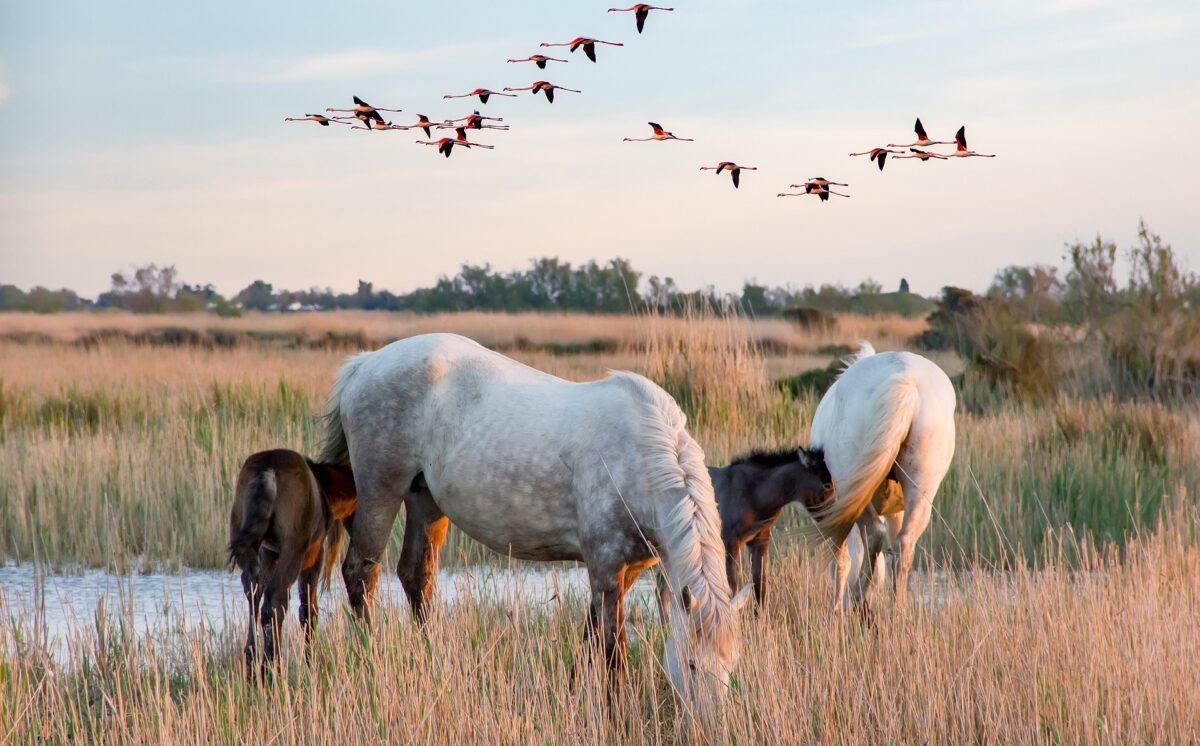
The Walers, 2024. Image: Camargue horses grazing near Sainte Marie de La Mer, France, backpackinglikeaboss.com
Conservation grazing is done very successfully in so many countries. It’s all about adequate management, with local people forming groups to do this. It’s also simply common sense. They’re a valuable resource, helping country.
Of basic significance is that wild horses/native horses and ponies graze totally differently to domestic equines. They bite off grass higher, and only lightly graze each area…. this allows grasses to seed and stops erosion, also stops lank thatching which stifles many plants and is a fire trap. They have very strong teeth and jaws so can eat tough vegetation domestic horses cannot eat at all and they also have a bigger stomach to process low quality feed and thrive.
So many countries now have recognised the immense value of conservation grazing and allow their old horse breeds to remain on National Park and other public land areas – the original areas where they were developed as breeds. In many places horses have been introduced to save these areas. These populations are superbly managed. Many countries realised, too late, they had killed off their own horse and pony breeds. They had to re-introduce horses to the wild areas to maintain an environmental balance.
The use of conservation grazing is well supported by science as well as by practical experience.
We’ve included a few examples in the post to demonstrate how conservation grazing is achieving positive outcomes for the land and the wild horses in USA, Europe, and UK, and please look at these outstanding examples in Spain. Read our post about Snake Island Droving to learn about a great example of what could be done in Australia on a larger scale.
Let’s start with the Appalachian Ponies of Mount Rogers National Recreation Area and neighbouring Grayson Highlands State Park in southwestern Virginia, USA.
They’ve been there since the 1940’s according to some, descendants of the small tough horses (ponies) bred by locals for the tough conditions – steep country, extreme weather – now a major draw-card to the park. Basically, their origins are a mystery.
Friendly, docile, tough little ponies that winter out in heavy snow conditions. 200,000 acres were available but some time ago 3,500 were fenced to contain the ponies. Within this area they do a good job of controlling mountain meadows known as “the balds” – keeping some open range-land so native species have grazing and there’s traditional habitat for both flora and fauna.
After a while longhorn cattle were added to the area on a lease arrangement to help with grazing – keeping fire hazard and introduced species down – helping the ponies which couldn’t keep up due to small numbers. The cattle are removed during the harsh winters but the ponies remain. The area was made a National Park in 1965. Some accounts say the Parks released Chincoteague Ponies there in 1974, but this hasn’t been substantiated (DNA tests might help). Another account says Bill Pugh and friends took ponies to the area in 1974 to control areas once controlled by cattle. The Wilburn Ridge Pony Association bought the ponies from Pugh to maintain ownership outside Parks ownership; this account sounds logical.
In 1974 locals formed the Wilburn Ridge Pony Association – they do an admirable job of monitoring the ponies. Each is known to them as they do regular rides to check on them – there are only about 100 ponies in total – and they hold an annual muster each autumn to check them all over health-wise, and if necessary to remove younger males (colts/stallions) and the occasional filly/mare. They’re auctioned off and always meet a ready sale – at a price they go to homes, not for slaughter – known for their excellent temperament and hardiness. Salt blocks are used to trap them; not all are trapped each year; it’s too mountainous an area for a full muster. They’re auctioned at the Grayson Highlands Fall Festival, amid bluegrass music and pioneer crafts. Keeping less males makes the herds left larger, which helps in monitoring them; usually only one or two mares with one stallion forms a wild herd, but with these ponies it’s many more mares.
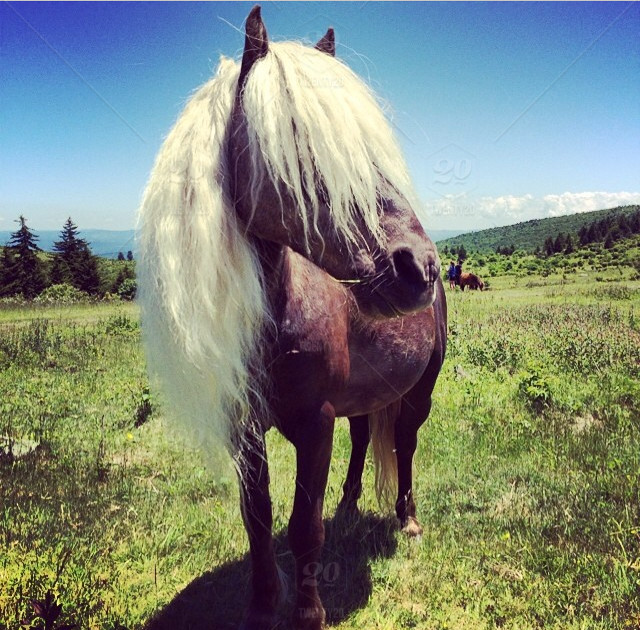
The stallion in the photo is Fabio – known as “the pony that started it all.” Named Fabio by the Parks rangers for his lairy looks. His looks also caused public attention to be drawn to the ponies which helped to gain them protection. An old stallion now, he’s allowed to remain with his herd, although appears to have become infertile in his late years.
The Appalachian Ponies grow 11 to 12 hands high, and come in bay, chestnut, broken colours and various interesting dilutes (or whatever the term is) such as Fabio.
Bush walkers in the Park, on its most popular track the Appalachian Trail, love to photograph them. Feeding is prohibited as of course it can turn them into bullies. Unfortunately there are always idiots; they ruin a pony by feeding, so they become nuisances to walkers doing the right thing. Constant quiet humans about however, helps the foals grow up trusting around humans.
Lovely to see this well managed little wild population, it’s one of the few wild pony populations in the world.
The only other one we know of in the USA are the Chincoteague Ponies in Assateague Island National Park, thought to be descended from the Spanish warship La Galga wrecked on the island in 1750. All the horses she carried got off alive. Most of the people were rescued, taken to the mainland by natives in canoes. Ponies live on the island to this day, which they have to themselves; they are managed well by an annual muster when excess are sold.
Image from Tacoma World Website
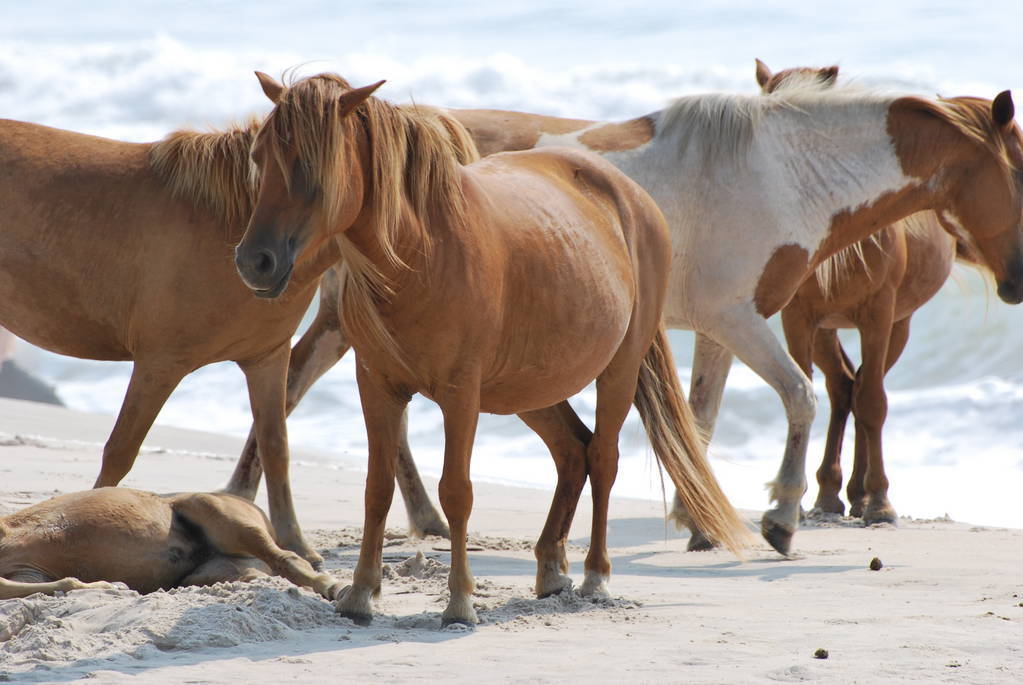
In Europe we see the Garrano of northern Portugal being used for conservation grazing. Believed to be a direct descendant of the ancient Spanish/Portuguese pony with added genetics from the later Celtic pony in the 9th century BC, the Celtic pony having Arab horse characteristics; ponies have been in the area for thousands of years. The name in Irish and Scottish Gaelic is gearrán/gearran respectively. Celtic people were spread across Europe, the Gallaecian language a form of Hispano-Gaelic.
These ponies live in the wild of the Côa Valley, Faia Brava Reserve, helping with bushfire mitigation in a re-wilding program on 600 hectares (100,000 hectares are marked for re-wilding), and to help the breed survive – there are less than 1,500 in total. They’re called grazing fire brigades as they help control biomass and help with biodiversity. Also proved tremendous tourist attractions for the area.
In the wild they must protect themselves from the wolves of the area – and vica versa – but many are kept domestically.
The wild population was so small, more were released into the reserve in 2015 to keep them going, bringing the population there to 53. Extensive DNA testing had been undertaken to define the breed, defined as a rare native breed by the Portuguese government in 1994, which undertook to help preserve them through the Ministry of Agriculture. Ancient rock art of the area depicts the Garrano.
Hardy, good natured, intelligent, sure footed, they come in a wide range of solid colours, most being bay. Top height about 13.1hh. A strong farm worker and utility pony, many show lateral gaits.
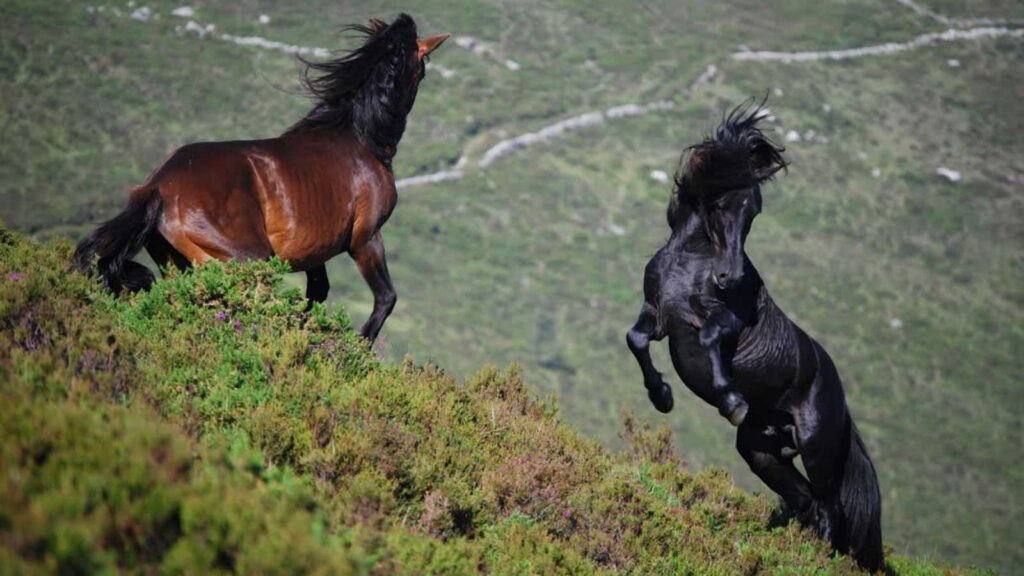
Once a wild horse, Equus ferrus ferrus, known as the Tarpan, lived aross Europe, mostly in marshy woodlands. However by the early 1800’s they were practically extinct. Attempts were made to save them by crossing the last few with similar looking breeds by the Heck brothers in Germany. The last little mobs of these descendants, however, were almost all eaten by hungry people in WW2. The few left went to the USA in late 1950’s.
After WW2 a look-alike breed was created in Europe, the Konik – some call it the Tarpan but genetically it’s Equus caballus – modern horse. Now introduced to many European countries for conservation grazing and instrumental in restoring fragile wetlands including in Latvia, Poland, Belarus, Croatia, Ukraine, Germany, Bulgaria, Netherlands and England, “Konik” is the Polish word for little horses (pony).
Photo from TrueNatureFoundation website
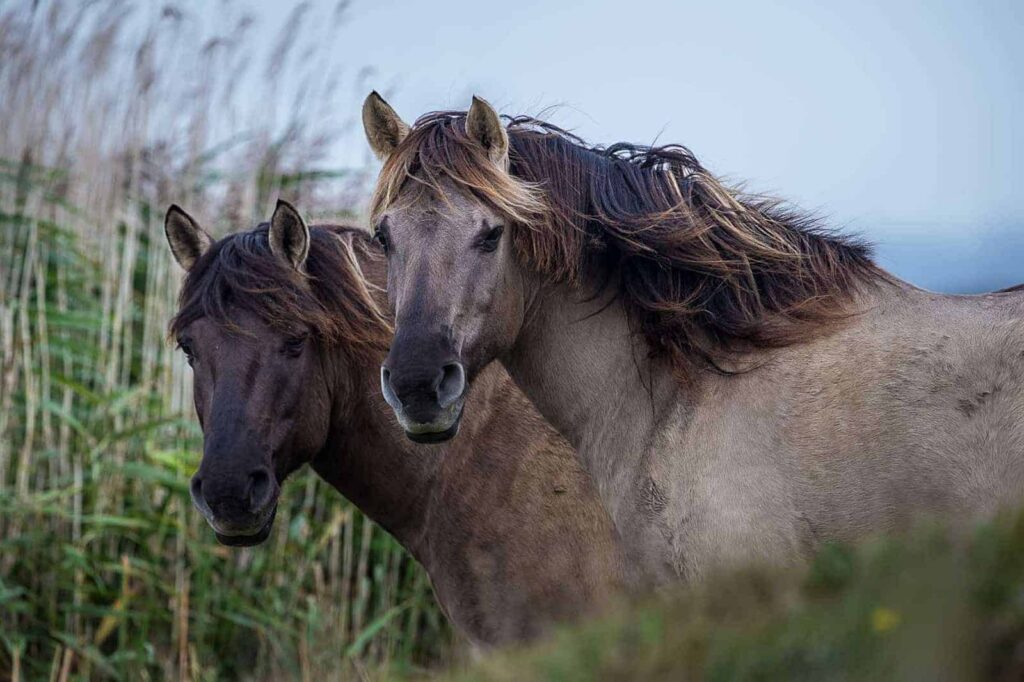
La Feria du cheval is a traditional festival held in Saintes-Maries-de-la-Mer Camargue, France showing horse and cattle skills; with lots of gypsy music. Several festivals a year are held in this seaside town including running with the black bulls of the Camargue at Christmas.
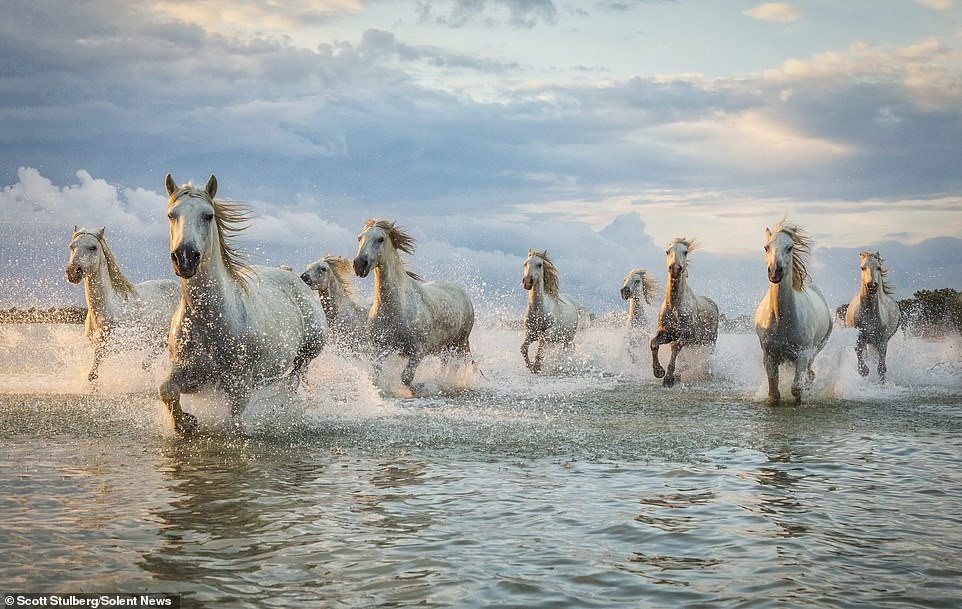
Image is of Camargue horses galloping in the lake near Sainte Marie de La Mer. The lake is brackish, being fed from the sea.
The horses have adapted over centuries to feeding in salt conditions, thriving on low quality feed, becoming used to plentiful local biting insects. They have great value for conservation grazing and are well managed.
This shows just how valuable it is to allow some horses to sustainably live in some areas, as they are the best work animals for that area: hardier and well used to conditions.
Just like the wild ponies of Galacia, Spain. Hardy, good natured, tough little ponies. Virtually all colours with bay predominant. Greatly valued for their conservation grazing, their main job.
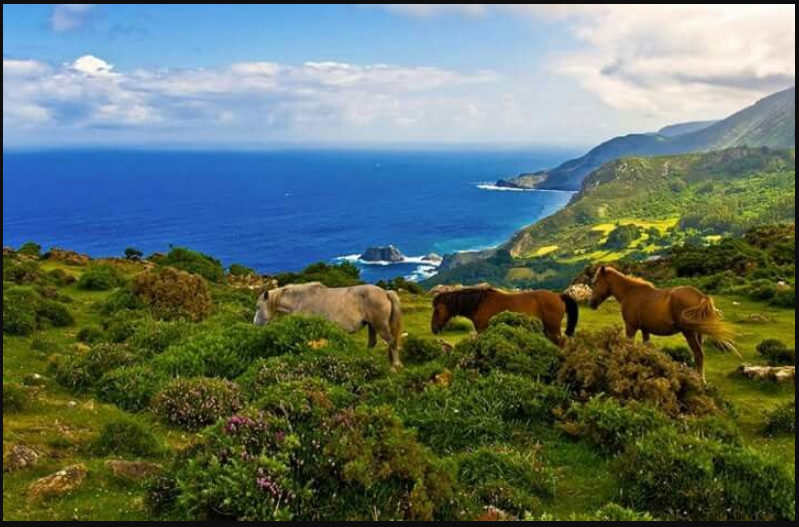
Every July is a four-day long muster of these ponies – an annual event that draws huge crowds. Once yarded, people may claim a pony they previously claimed as it is theirs for life (microchipping now makes ownership easier) and others are allocated to whoever can wrestle and keep hold of them – yes, perhaps someone forgot to tell them about ropes, chutes, etc. but that’s how it is!
Some go to homes for riding ponies, the odd one is sold for meat, but rarely, and most are released again to the wild hills, coasts and forests of Galacia.
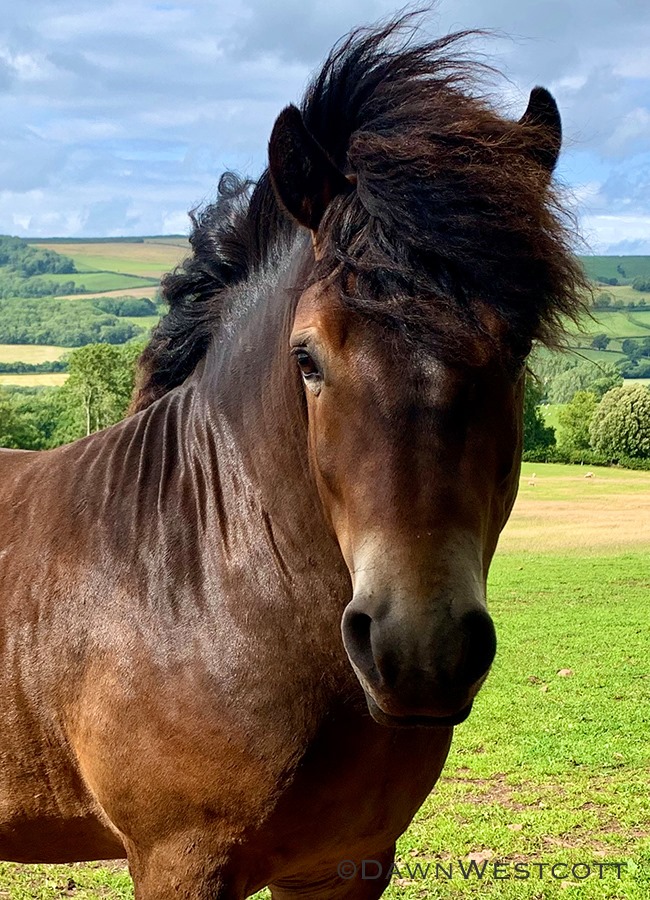
Another example is the Exmoor Pony in its native land, UK, a rare breed valued for conservation grazing, as well as being super trusty mounts… what a handsome chap! A few Exmoor ponies came to Australia in early days and there would be a tad of their genes in some Waler lines. Welsh were the most numerous British pony breed sent here.
The Exmoor Pony Project is helping to promote and safeguard the endangered Exmoor pony breed, encourage better understanding and treatment of ponies and campaign for welfare and management improvements.
Exmoor Stallion Yogi Bear, photo by Dawn Westcott
Connemara National Park, Ireland, was established in 1980. Ireland’s President Erskine Childers had presented the State with six mares and foals in 1974, so it was decided descendants of this State herd should live in this Park.
The Connemara is one of Ireland’s only two native pony breeds (Kerry Bog pony is the other).
photo from ThousandWonders website
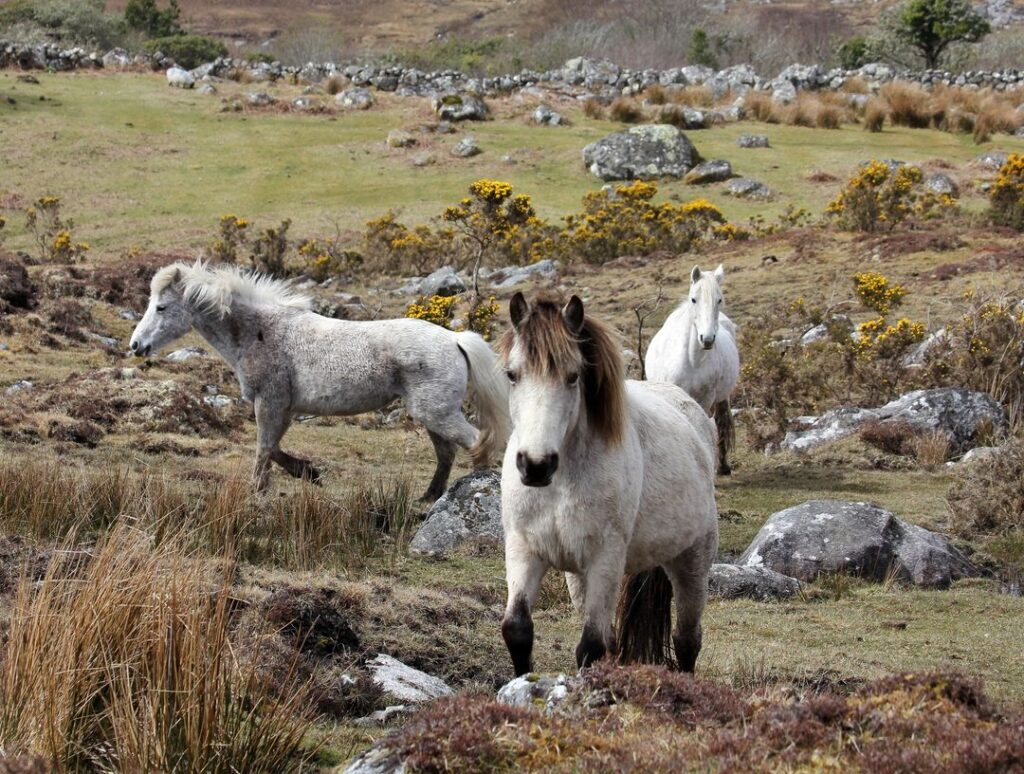
The Connemara Pony Breeders’ Society took over management of this State herd of ponies in the Park in about 2002. Some of them are donated to conservation groups, some going to Áras an Uachtaráin to help maintain biodiversity there. Irish Moiled cattle also graze in the Park; in this way the state helps maintain the country’s native, and rare, breeds. Usually about six Connemara Ponies are in the Park. The mares raise their foals there. A dun male, Sandy, was added to the herd in around 2021 (probably him in the photo).